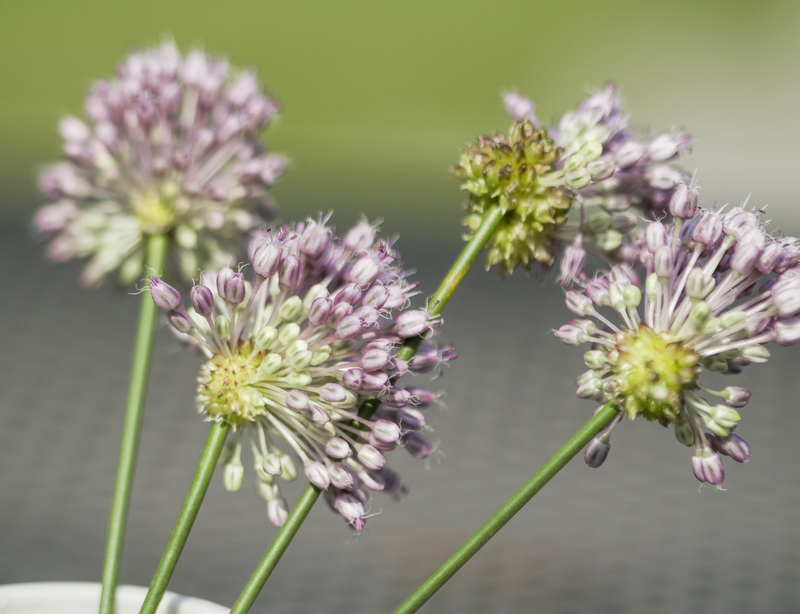Transforming Neglect: Steps to Revitalize Your Garden
Posted on 31/05/2025

Transforming Neglect: Steps to Revitalize Your Garden
A neglected garden is more common than you might think. Life gets busy, weeds take over, and suddenly, your once-beautiful outdoor space feels like a jungle of lost potential. But reviving a neglected garden is not only possible--it can be deeply rewarding. Whether you've just moved into a home with an overgrown yard or your once-vibrant flower beds have faded into disrepair, now is the perfect time to breathe new life into your green space.
In this comprehensive guide, we'll explore the complete process of transforming garden neglect into thriving beauty. You'll discover clear steps, practical tips, and insights from seasoned gardeners to help you refresh, reclaim, and reimagine your outdoor area.
Why Revitalize a Neglected Garden?
- Boost Property Value: A beautiful garden increases curb appeal, making your home more attractive to visitors and buyers.
- Environmental Benefits: Healthy plants support local wildlife, improve air quality, and help with water retention.
- Mental Well-being: Gardens are proven to reduce stress and improve mental health through relaxation and hands-on activity.
- Personal Satisfaction: Transforming neglect into abundance brings a deep sense of accomplishment.
Ready to reclaim your outdoor paradise? Here are actionable steps for revitalizing a neglected garden, no matter its current state.
Step 1: Evaluate the Current State of Your Garden
Start with Assessment
Before you do anything else, walk through your garden and take stock of what you're dealing with. Bring a notebook or use your phone to record important observations, such as:
- Overgrown areas: Where do weeds and unruly plants dominate?
- Existing features: Any trees, hedges, or hardscaping worth saving?
- Dead or dying plants: Identify what can be revived and what needs removing.
- Soil condition: Check for compacted, dry, or poor-quality soil.
- Sunlight and shade: Note which areas get full sun, partial shade, or deep shade.
Photograph Everything
Snap before-and-after photos as you go. Not only will this document your progress, but it will also help you plan your revitalization project.
Step 2: Develop a Clear Vision
Establish Your Goals
What do you want from your garden? Are you dreaming of a colorful flower paradise, a low-maintenance retreat, or a productive vegetable patch? Take some time to imagine:
- An oasis for relaxation and entertaining
- A wildlife-friendly garden
- An edible landscape with herbs and vegetables
- A blooming pollinator haven
Sketch a Simple Plan
Draw a basic map of your garden space. Mark existing features, and highlight areas where you'd like change. This visual guide will help you stay focused as you transform your neglected garden.
Step 3: Clean and Clear Out the Neglect
Remove Debris and Rubbish
Begin by getting rid of anything that doesn't belong:
- Broken pots, garden furniture, and other waste
- Dead branches and fallen leaves
- Glass, plastic, discarded tools, and other litter
Prune and Cut Back
Pruning is essential for restoring structure to overgrown plants. Use sharp secateurs or loppers to:
- Remove dead, diseased, or broken branches
- Shape shrubs and trees to restore their form
- Thin out dense growth to improve air circulation
Weed Thoroughly
Pull out weeds by the roots, making sure to reduce the weed seed bank in your soil. For large areas, use a hoe or consider laying down weed-suppressing fabric.
Step 4: Soil Renewal and Enrichment
Test Your Soil
Healthy plants start with healthy soil. Purchase a DIY soil test kit or send a sample to your local extension service. You'll learn about:
- Soil pH (acidity or alkalinity)
- Nutrient levels (nitrogen, phosphorus, potassium, etc.)
- Organic matter content
Knowing this will help you revitalize your garden beds for lush growth.
Amend and Enrich
Based on test results, add:
- Compost or well-rotted manure for organic matter
- Sand for drainage, if your soil is heavy clay
- pH adjusters (lime or sulfur) if necessary
- Mulch to suppress weeds and retain moisture
Work amendments into the top 6-8 inches of soil--roots grow best in nutrient-rich, crumbly soil.
Step 5: Plan New Plantings
Choose the Right Plants
Select plants suited to your climate, soil, and level of sunlight. Native species are often the best choice for low maintenance and supporting local wildlife.
- Perennials: For low-maintenance and year-after-year color
- Annuals: For instant blooms and quick results
- Shrubs and trees: For structure and long-term interest
- Vegetables and herbs: For a productive, edible garden
Think in Layers
Create visual depth by planting in layers:
- Tall trees and shrubs at the back or center
- Medium perennials in the middle sections
- Low ground covers and annuals at the front or edges
Step 6: Revitalize Your Lawn
Assess the Damage
A patchy, weed-choked lawn is a common sight in neglected gardens. Decide whether to repair, reseed, or replace the grass altogether.
Rescue or Reseed
- Remove tough weeds and moss with a rake or by hand
- Aerate compacted soil to improve drainage
- Top-dress with a thin layer of compost
- Reseed bare patches with suitable grass seed
- Water regularly, keeping the soil consistently moist
Alternative: Embrace Meadows or Groundcovers
For smaller yards or to reduce maintenance, consider converting problem lawn areas into wildflower meadows, gravel gardens, or creeping groundcovers like clover.
Step 7: Add Focal Points and Features
Enhance with Structure
Even a small or neglected garden can be totally transformed by adding a few well-chosen features:
- Pathways (gravel, stepping stones, or pavers) to guide the eye
- Arbors or trellises for vertical interest and climbing plants
- Benches, birdbaths, or sculptures as focal points
- Pots and containers for pops of seasonal color
Light Up the Space
Outdoor lighting extends the garden's use into the evening and adds atmosphere. Try:
- Solar lights along paths
- String lights in trees or on fences
- Spotlights for dramatic features
Step 8: Set Up a Sustainable Garden Care Routine
Consistency is Key
A revived garden is more likely to thrive with regular, simple maintenance. Make these habits part of your weekly or monthly routine:
- Deadhead spent flowers to encourage blooms
- Weed little and often to prevent buildup
- Water deeply, especially during dry spells
- Apply mulch annually for weed suppression and soil improvement
- Monitor for pests and diseases, treating early as needed
Invest in Quality Tools
Sharp, sturdy tools make garden revitalization much easier. Essentials include:
- Sharp secateurs/pruners
- Spade and garden fork
- Hoe and hand trowel
- Rake and sturdy gloves
Step 9: Embrace the Benefits--And Keep Improving!
Enjoy the Journey
Transforming a neglected garden isn't a one-time task--it's a process of growth and discovery. Each season brings new opportunities and lessons.
- Celebrate milestones: Take pride in every improvement, from the first new shoots to flowering success.
- Stay open to change: Gardens evolve--your tastes and needs may too.
- Invite friends and family: Share your rejuvenated garden with others; gardening is more fun together!
Bonus Tips for Successful Garden Transformation
- Start small: Tackle one bed, border, or section at a time to avoid feeling overwhelmed.
- Seek inspiration: Visit local gardens, browse Pinterest, or join online garden communities.
- Practice patience: Some changes take weeks or months to reveal rewards--nature works at its own pace.
- Go organic: Reduce chemical use to protect beneficial insects and birds.
- Compost: Turn garden waste into nutritious compost to feed your soil for free.
Garden Revitalization: Frequently Asked Questions
How long does it take to revitalize a neglected garden?
The timeline varies depending on the extent of neglect. You can see big improvements in just a few weekends, but full transformation usually happens over one growing season or more.
Can I revitalize my garden on a budget?
Absolutely! Reclaiming a neglected garden can be done with minimal spending. Use free compost, swap plants with friends, and choose budget-friendly seeds or cuttings over expensive mature plants.
Should I hire a professional landscaper?
For seriously overgrown or hazardous gardens (like those with invasive plants, large trees, or structural issues), consulting a professional can save time and prevent mistakes. For most home gardens, however, dedicated DIY effort will produce beautiful results.
What's the best time to start garden revitalization?
Spring and autumn are ideal, providing moderate weather for planting and soil improvement. However, debris clearing, planning, and hardscape work can begin year-round.
Conclusion: Your Garden's Next Chapter Awaits
A forgotten yard can become a flourishing oasis again with the right approach. By following these garden revitalization steps, you'll reclaim your outdoor space, boosting its health, beauty, and value. Remember--every patch of neglect is an opportunity for renewal. Roll up your sleeves, embrace the process, and rediscover the joys of gardening!
Ready to transform your neglected garden? Start today and let your garden's true potential shine!




